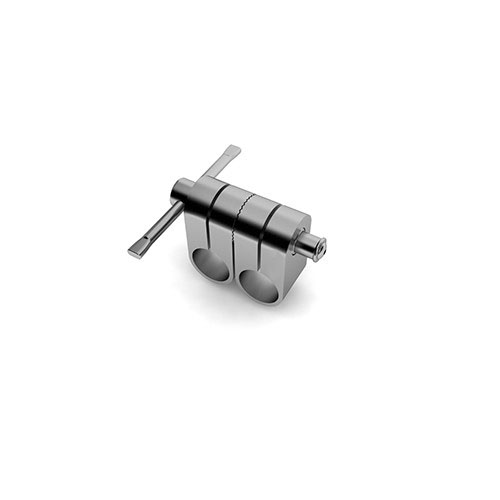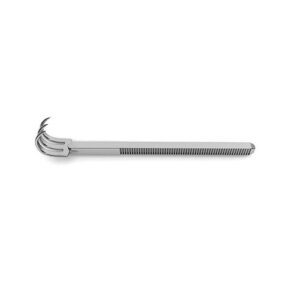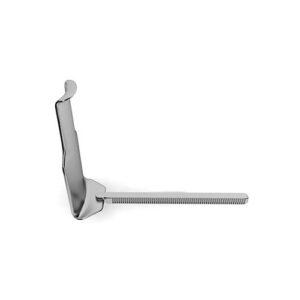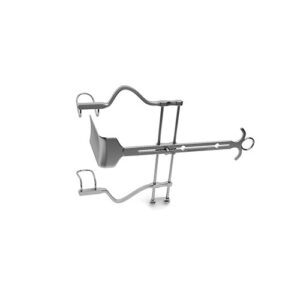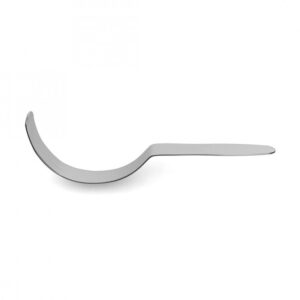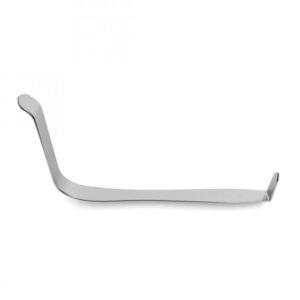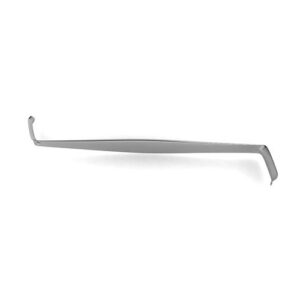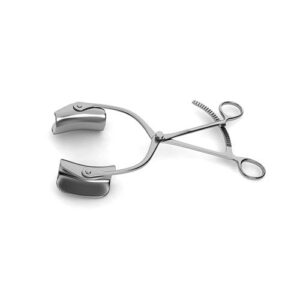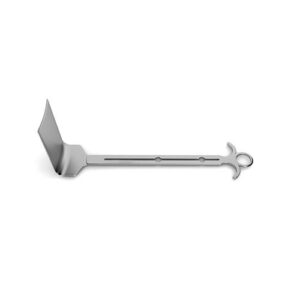| Name | Universal Ring Retractor Post Coupling |
| Lead Time | 0-10 days |
| Specialty | General Instruments-Hooks & Retractors – Universal Ring Retractor System |
| Material Finish | Stainless Steel |
| Grade | Premium Operating Room |
| Units of Measurement | Each |
| Manufacturer | seemab surgical |
| Sterility | Non-Sterile |
| Usage | Reusable |
Universal Ring Retractor Post Coupling
Universal Ring Retractor Post Coupling
1″ (2.5 cm) diameter
Universal Ring Retractor Post Coupling is designed to be used as an attachment for a horizontal bar as part of a ring retractor system. This item can be rotated to the desired position and can be tightened using the lever bar. Furthermore, this instrument is comprised of high quality German stainless steel that is able to resist corrosion after frequent use.
SKU:
VI-01-617
Category: Hooks & Retractors
Description
Shipping & Delivery
Related products
Balfour Standard Center Blade – For Detachable System
Detachable System
for detachable balfour retractor systems
Balfour Standard Center Blade is designed to be used with the detachable Balfour Retractor Systems. This blade is offered in two different sizes and contains a curved blade with lips on the outer edge to keep an incision open. The handle of this center blade is fenestrated in the middle and includes placement holes so that it can spread to different sizes.
Balfour Abdominal Retractor W/ Fixed Side Blades – 4″ Deep
w/ fixed fenestrated side blades, 4" deep & center blade #2470-73 (3-3/8" x 2-1/2")
Balfour Abdominal Retractor with Fixed Side Blades contains fenestrated side blades that are fixed onto the instrument. This retractor is primarily used during surgeries in which large abdominal incisions need to be held open to provide more visibility to the surgeon. Moreover, the instrument is offered in different sized spreads to accommodate different patients.
Deaver Retractor – Flat Handle
Deaver Retractor - Flat Handle
flat handle, flexible
Deaver Retractor with a flat handle contains a flexible curved blade that is offered in two different widths and lengths depending on the surgical requirements. During general operations, specifically the involvement of the abdominal or chest cavity, this retractor can allow the surgeon to move one side of the incision to access the area that needs attention. If a deeper section needs to be accessed, the longer and wider blade may be more beneficial.
Balfour Narrow Center Blade
Balfour Narrow Center Blade
for detachable balfour retractor systems
Balfour Narrow Center Blade consists of a flat blade on one end that is curved at a right angle. This blade also contains small lips on the edges to keep a large incision open. The handle of this instrument is fenestrated and has small loops that rods from lateral blades can fit onto in order to create the desired spread size.
Deaver Retractor – Double-Ended
Double-Ended
double-ended, 1" wide x 9" long
Deaver Retractor is typically used during abdominal procedures to keep the organs from interfering with the surgical site. This double-ended instrument has a long, curved blade on one end and a short, right angle blade on the other end. The shorter end may help to retract the walls of the bladder during intravesical surgeries, and the longer end may be helpful for deeper retractions.
Crile Retractor
Crile Retractor
double-ended, 3.0 mm x 11.0 mm & 6.0 mm x 20.0 mm blades, 4-1/2" (11.4 cm)
Crile Retractor is a hand-held instrument that can hold back tissue or organs so that the surgical site can be accessed. This retractor has a wide body and right-angle blades on each end to maintain the desired position once inserted around the edges of an incision. It is offered in a 4 ?" length, which is idea for smaller openings.
Collin Abdominal Retractor
Set includes: frame (110.0 mm spread, 9-1/4" (23.5 cm)) & pair of blades (62.0 x 38.0 mm)
Collin Abdominal Retractor is an entire set that includes a frame and a pair of blades. These blades are outwardly curved at a right angle and are deep enough to retract thicker areas of the abdomen. In addition, the retractor contains ring handles and a spreader that has a maximum spread of 110.0 mm, which can keep larger incisions open.
Balfour Extra-Deep Center Blades
For balfour retractor systems w/ fixed side blades, 2-3/4" wide x 4" deep
Balfour Extra-Deep Center Blades consists of a 4" deep blade that is curved at a right-angle. This blade may be intended for larger patients or for accessing deeper areas of the abdominal cavity so that they can be held in place. Another feature of this center blade is that it contains loop holes in the center slot so that it can provide different spreads.

